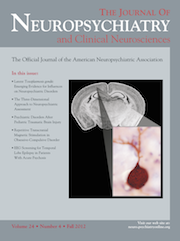What Are the Opportunities for EEG-Based Monitoring of Delirium in the ICU?
Abstract
Recognition of delirium in intensive care unit (ICU) patients is poor, despite the use of screening tools. Electroencephalography (EEG) with a limited number of electrodes and automatic processing may be a more sensitive approach for delirium monitoring. The authors conducted a systematic literature search on EEG characteristics that define delirium, finding 14 studies, which were predominantly conducted in elderly patients. The relative power of the theta and alpha frequency band most often (7/14 studies) distinguished delirium from non-delirium subjects. Given the feasibility for continuous EEG monitoring in ICU, EEG delirium monitoring in ICU patients is promising.



